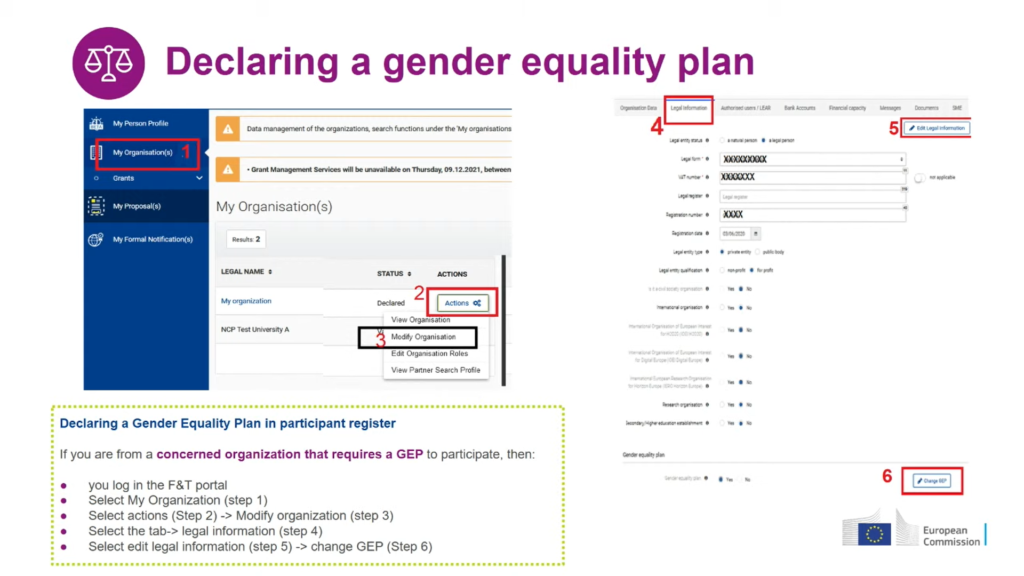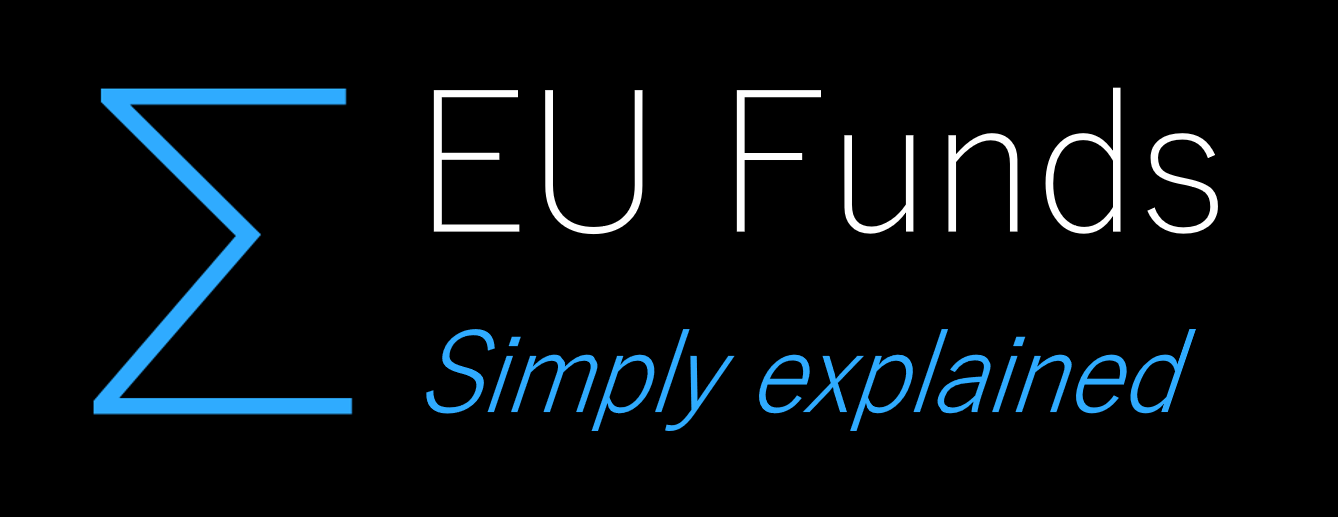The Gender Equality Plan (GEP) in Horizon Europe is a mandatory document for public bodies, higher education establishments, and research organisations. Only organisations from EU Member States or Associated countries are subjected to this obligation. It is recommended for private-for-profit entities, non-governmental organisations, and civil society organisations.
A GEP is a set of commitments and actions that aim to promote gender equality in an organisation through institutional and cultural change. It should contain four mandatory process-related requirements:
- Public document: The GEP must be a formal document published on the institution’s website, signed by the top management and actively communicated within the institution. It should demonstrate a commitment to gender equality, set clear goals and detailed actions and measures to achieve them.
- Dedicated resources: a GEP must have dedicated resources and expertise in gender equality to implement the plan. Organisations should consider what type and volume of resources are required to support an ongoing process of sustainable organisational change.
- Data collection and monitoring: organisations must collect sex/ gender disaggregated data on personnel with annual reporting based on indicators. Organisations should consider how to select the most relevant indicators, how to collect and analyse the data, including resources to do so, and should ensure that data is published and monitored on an annual basis. This data should inform the GEP’s objectives and targets, indicators, and ongoing evaluation of progress
- Training: The GEP must also include awareness-raising and training actions on gender equality. These activities should engage the whole organisation and be an evidence-based, ongoing and long-term process. Activities should cover unconscious gender biases training aimed at staff and decision-makers and can also include communication activities and gender equality training that focuses on specific topics or addresses specific groups.
In addition to these four mandatory requirements, there are also five recommended content-related areas that organisations may wish to consider in their GEP:
- Work-life balance and organisational culture: GEPs aim to promote gender equality through the sustainable transformation of organisational culture. Organisations should implement necessary policies to ensure an open and inclusive working environment, the visibility of women in the organisation and externally, and that the contribution of women is properly valued. Inclusive work-life balance policies and practices can also be considered in a GEP, including parental leave policies, flexible working time arrangements and support for caring responsibilities.
- Gender balance in leadership and decision-making: Increasing the number and share of women in leadership and decision-making positions touches upon all aspects in the GEP. Measures to ensure that women can take on and stay in leadership positions can include providing decision-makers with targeted gender training, adapting processes for selection and appointment of staff on committees, ensuring gender balance through gender quotas, and making committee membership more transparent.
- Gender equality in recruitment and career progression: Critically reviewing selection procedures and remedying any biases can ensure that women and men get equal chances to develop and advance their careers. Establishing recruitment codes of conduct, involving gender equality officers in recruitment and promotion committees, proactively identifying women in underrepresented fields and considering organisation-wide workload planning models can be important measures to consider in a GEP.
- Integration of the gender dimension into research and teaching content: The GEP should consider how sex and gender analysis will be included in the research or educational outputs of an organisation. It can set out the organisation’s commitment to incorporating sex and gender in its research priorities, the processes for ensuring that the gender dimension is considered in research and teaching, and the support and capacity provided for researchers to develop methodologies that incorporate sex and gender analysis. Research funding and research performing organisations both have a role to play in ensuring this.
- Measures against gender-based violence, including sexual harassment: Organisations establishing a GEP should consider taking steps to ensure they have clear institutional policies on sexual harassment and other forms of gender-based violence. Policies should establish and codify the expected behaviour of employees, outline how members of the organisation can report instances of gender-based violence and how any such instances will be investigated and sanctions applied. They should also consider how information and support is provided to victims or witnesses and how the whole organisation can be mobilised to establish a culture of zero tolerance toward sexual harassment and violence.
How to submit it?
On the Funding & Tenders Portal, after logging into your account, following these steps:

Source and more information here.













